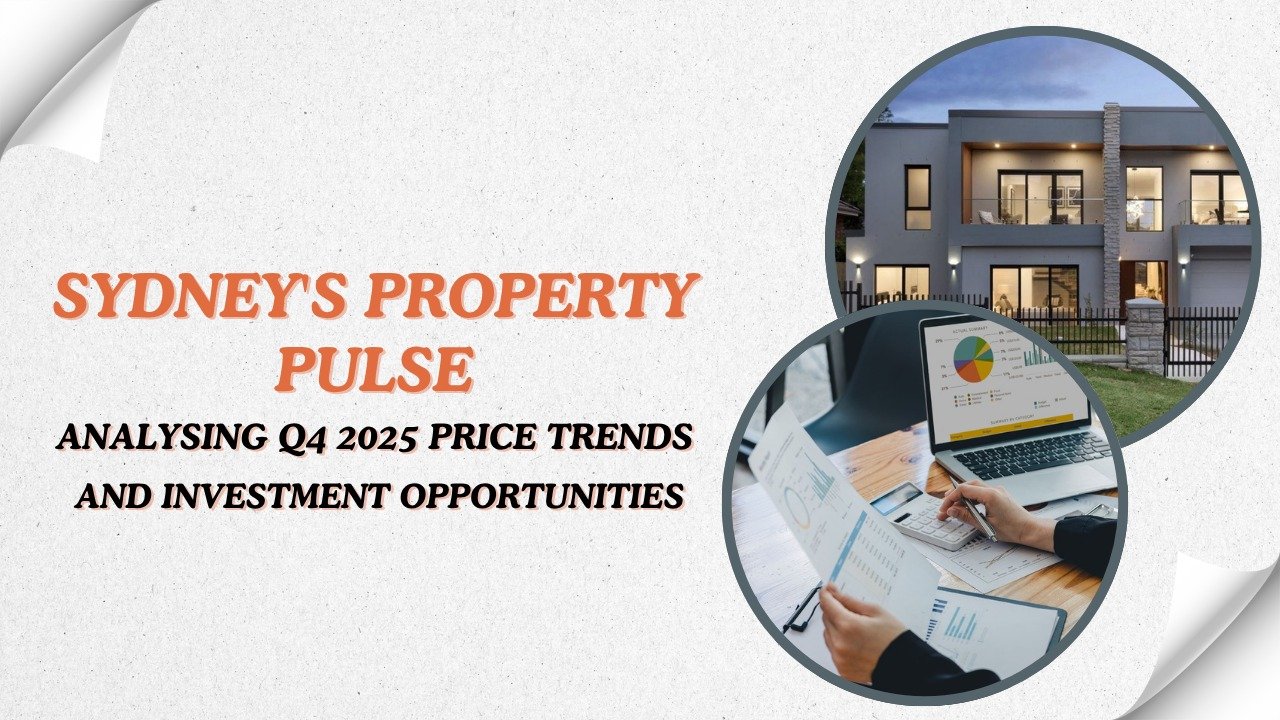Let’s talk about one of the biggest challenges in property...
Read MoreNewsfeed
Share Article
Categories/Tags
Register To Our E-News
Latest News
The Power of Research: How Commercial Property Analysis Uncovers Hidden Gems
Walk down any major city street in Australia, and you’ll...
Read MoreTop 5 Data-Driven Real Estate Investment Strategies for 2025
Let’s be honest: the days of buying any property and...
Read MoreAustralian Property Price Trends: A National Overview for Investors
Trying to get a clear read on the Australian property...
Read MoreSydney’s Property Pulse: Analysing Q4 2025 Price Trends and Investment Opportunities
Let’s be honest, trying to pin down the Sydney house...
Read More
Property Managed Funds Demystified: A Smart Path to Portfolio Diversification
Let’s talk about one of the biggest challenges in property investing: putting all your eggs in one basket. You’ve worked

The Power of Research: How Commercial Property Analysis Uncovers Hidden Gems
Walk down any major city street in Australia, and you’ll see them: commercial properties. The office tower, the neighbourhood shopping

Top 5 Data-Driven Real Estate Investment Strategies for 2025
Let’s be honest: the days of buying any property and watching its value skyrocket are long gone. Today’s property market

Australian Property Price Trends: A National Overview for Investors
Trying to get a clear read on the Australian property market can feel like trying to predict the weather in

Sydney’s Property Pulse: Analysing Q4 2025 Price Trends and Investment Opportunities
Let’s be honest, trying to pin down the Sydney house price market can feel like trying to predict the weather.

How to Invest with a Property Fund: A Step-by-Step Guide to Getting Started
You’ve decided that direct property investment—the 3am plumbing emergencies, the tenant dramas, the sheer concentration of capital—isn’t for you. But
Industry
Australian Property Price Trends: A National Overview for Investors
-
Real Estate Science

Trying to get a clear read on the Australian property market can feel like trying to predict the weather in Melbourne—just when you think you have a pattern, everything changes. Headlines swing from “boom” to “bust” so quickly it can make your head spin.
For an investor, this noise is more than just confusing; it’s paralyzing. How can you make a confident decision when the narrative shifts daily?
The truth is, there is no single Australia property price trend. The market is a collection of individual stories, each with its own plot twists. In this national overview, we’ll cut through the hype, look at the data, and provide a clear-eyed perspective on what’s really happening across the country for investors like you.
The National Picture: A Tale of Two (or Three) Markets
If you take a step back and look at the whole map, the overarching Australia property price trend is one of surprising resilience. Despite high interest rates and cost-of-living pressures, property values have, in many areas, held firm or even continued to grow.
But this resilience isn’t uniform. We’re currently seeing a multi-speed market, which can be broken down into three main narratives:
- The Resilient Rebounders (Sydney, Melbourne, Brisbane)
- The Steady Performers (Adelaide, Perth)
- The Cooling Contingent (Some regional areas and specific suburban pockets)
Let’s break down what’s driving these trends on a city-by-city level.
City Spotlight: Where the Action Is
Sydney & Melbourne: The Phoenix Markets
After bearing the brunt of the initial interest rate downturn, these two giants have staged a remarkable comeback. The Australia property price trend here is one of recovery, fuelled by a perfect storm of pent-up demand, intense competition for a limited number of properties, and strong international migration.
The key takeaway? The premium end has stabilised, but the real heat is in the middle market, where a shortage of family-suitable homes is creating fierce competition.
Brisbane: The Golden Child
Brisbane’s Australia property price trend has been a standout for several years now, and the momentum hasn’t fully abated. While growth has moderated from its peak, the city continues to benefit from its relative affordability (compared to Sydney and Melbourne), strong interstate migration, and a pipeline of transformative infrastructure projects like the 2032 Olympics.
Adelaide & Perth: The Unsung Heroes
If you’re looking for steady, consistent growth, look west and south. Perth is arguably the strongest market in the country right now, powered by a booming resources sector and incredibly tight vacancy rates. Adelaide continues to chug along, offering affordability and a resilient local economy. These cities are a powerful reminder that the national narrative often overlooks strong regional stories.
The Key Drivers Behind the Trends
So, what’s actually powering these property price trends? It’s a tug-of-war between powerful forces.
The Headwinds (The Downward Pressure):
- Interest Rates: This is the big one. Higher mortgage repayments have undoubtedly stretched borrowing capacity and cooled the frenetic pace of growth seen in 2021.
- Cost of Living: Household budgets are tighter, making saving for a deposit and servicing a mortgage more challenging for many.
The Tailwinds (The Upward Pressure):
- The Immovable Supply Shortage: This is the most powerful force in the market. Simply put, we are not building enough homes to house our growing population. Data from the Australian Bureau of Statistics (ABS) consistently shows a gap between new dwelling approvals and population growth. This fundamental imbalance places a firm floor under prices.
- Strong Population Growth: International students, migrants, and interstate movers are back in force. All these people need a place to live, creating sustained rental and purchasing demand.
- A Resilient Labour Market: Surprisingly low unemployment rates mean most people are still earning an income, preventing a wave of forced sales that would typically drive prices down.
What Does This Mean for Investors? Navigating the New Landscape
In a multi-speed market, a one-size-fits-all strategy is a recipe for mediocrity. The old “set and forget” approach is riskier than ever. Here’s how to think about your investment strategy today:
- Diversification is Your Best Friend: Don’t put all your eggs in one geographic basket. The contrasting Australia property price trend between, say, Perth and Melbourne highlights the power of spreading your risk across different markets and asset classes.
- Focus on Fundamentals, Not FOMO: Chase quality, not just growth. Look for properties in locations with strong underlying fundamentals: proximity to employment hubs, transport, schools, and lifestyle amenities. These assets will always be in demand.
- Think Long-Term: Property is a long-game asset. Trying to time the market based on monthly Australia property price trend data is a fool’s errand. Focus on a 7-10 year horizon to ride out the cycles and benefit from compounding growth.
- Consider a Professional Approach: For many investors, building a diversified portfolio directly is capital-intensive and complex. This is where a data-driven, strategic approach can provide a significant edge.
At Real Estate Science Fund, we analyse these national and hyper-local Australia property price trends to identify undervalued opportunities. Our goal is to build resilient portfolios that aren’t reliant on the fortune of a single postcode. <a href=”https://realestatesciencefund.com.au/”>Discover how our scientific investment methodology can work for you</a>.
The Bottom Line: Clarity in the Complexity
The overarching Australia property price trend is one of resilience, driven by a critical shortage of housing. However, success in this new environment requires a more nuanced, strategic approach than in the past.
The key is to ignore the sensationalist headlines and focus on the data. By understanding the different forces at play in each market, prioritising diversification, and focusing on long-term fundamentals, you can navigate the current landscape with confidence and build a portfolio that’s built to last.
Disclaimer: This blog post contains general information only and does not constitute financial or investment advice. You should consider seeking independent legal, financial, taxation or other advice to check how the information relates to your unique circumstances.



